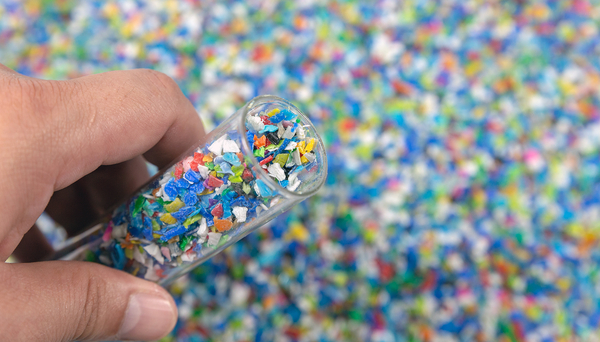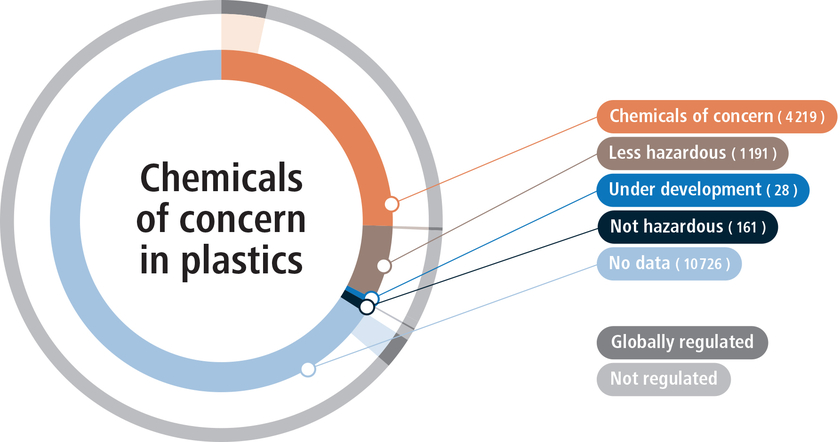News Detail
Identifying chemicals of concern in plastics – and pathways towards safer polymers
July 10, 2025 |
Plastics are everywhere, and the chemicals they contain are a core issue: All plastics, from food packaging to car tires, contain hundreds of chemicals that can leach into foodstuffs, homes, and the environment. Many of these are known to harm the health of humans and the environment. However, a comprehensive overview of these chemicals is currently missing, which limits society’s ability to protect people and planet from hazardous plastic chemicals. “Plastics should not contain harmful chemicals to begin with. Yet, the scientific evidence shows that they are intentionally used or unintentionally present in all types of plastics", says Martin Wagner, a lead author of the study and Professor at the Norwegian University of Science and Technology (NTNU) in Trondheim. "This underpins the urgent need to make plastics safer.”
The global «plastosphere» contains more than 16,000 chemicals
The new study by an international team of researchers with participation of Empa and Eawag shows: There are more chemicals in plastics than was previously known, with 16,325 chemicals included in the PlastChem database that accompanies the work. Importantly, the scientists discovered at least 4,200 plastic chemicals that are of concern because of the hazards they pose to health and the environment. “It may seem daunting to address the large number of problematic plastic chemicals, but the study provides the tools to do so", says Zhanyun Wang, co-author of the study and a scientist at Empa. "Importantly, simplifying chemical compositions is a prerequisite for advancing towards a safe and sustainable circular economy for plastics.”
These chemicals of concern can be present in each major plastic type, including food packaging, and all tested plastics can release hazardous chemicals. As Ksenia Groh, co-author and Group Leader in Bioanalytics at Eawag puts it: “Plastics can contain and leach unknown substances, such as contaminants, impurities or degradation products. The toxicity of chemicals leaching from plastics can be evaluated using bioassays, a practical alternative to chemical analytics. This promising approach needs further development for broader application in the future.”
Pathways to safer and more sustainable polymers
The new study outlines three major pathways towards safer and more sustainable plastics: safer chemicals, transparency, and chemically simpler plastics. Known chemicals of concern should be removed from plastics, either by voluntary industry action or regulation. More transparency is needed, given that industry currently does not disclose which chemicals are present in which plastic product. Finally, plastics should be re-designed to contain fewer chemicals that are thoroughly assessed for their safety, particularly if they are to be reused or recycled. “There is a lot of momentum to make plastics safer. Our study provides the scientific evidence needed to achieve that goal and to better protect human health and the environment from chemicals of concern in plastics", says Laura Monclús, another lead author of the study and researcher at the Norwegian Geotechnical Institute (NGI) in Trondheim.
Cover picture: The global «plastosphere» contains more than 16,000 chemicals. The new study published iprovides a comprehensive overview of all chemicals that can be present in plastics. (Image: Adobe Stock)


